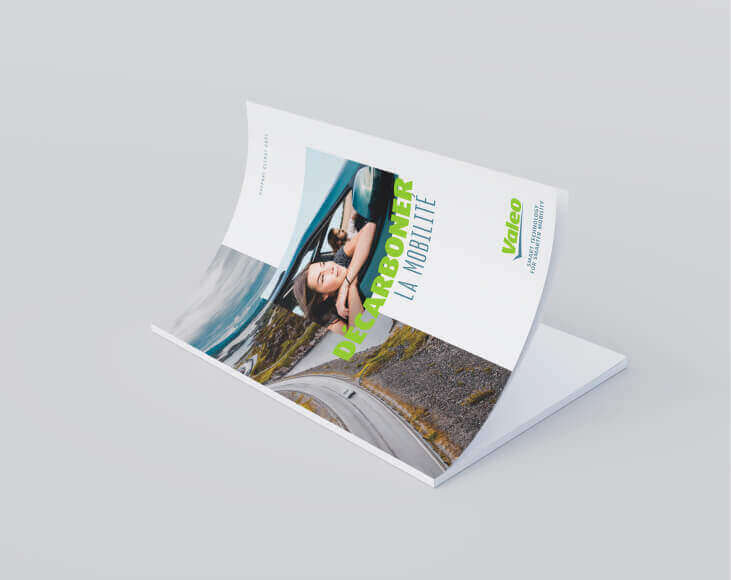
Climate Report
This first climate report presents the commitment, trajectory, governance and actions that Valeo will deploy to accelerate its path to carbon neutrality.

Christophe Périllat Valeo Chief Executive Officer
For over 20 years, our choices in terms of technology, governance, and environmental and social management have illustrated our commitment to tackling sustainable development challenges in a holistic way. The automotive industry is responsible for almost 20% of CO2 emissions worldwide, making decarbonization one of the key challenges we face today. And we aim to address the issue in a broad way that goes beyond vehicle use and involves our entire ecosystem – our plants, employees, suppliers and partners.
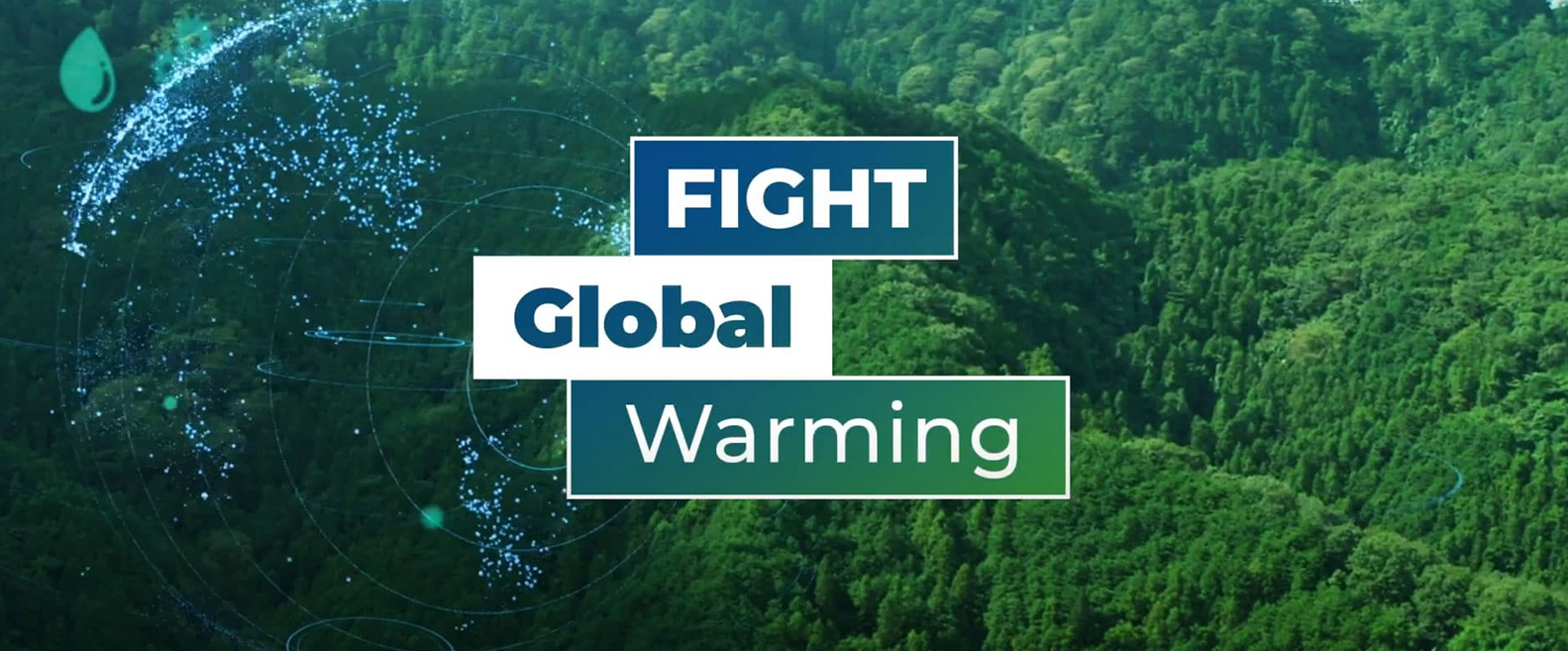
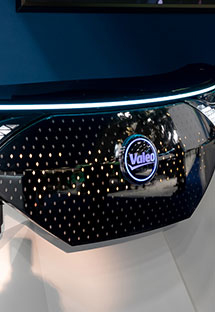
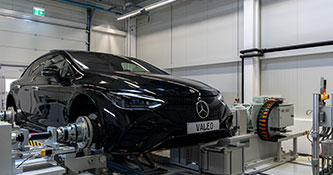
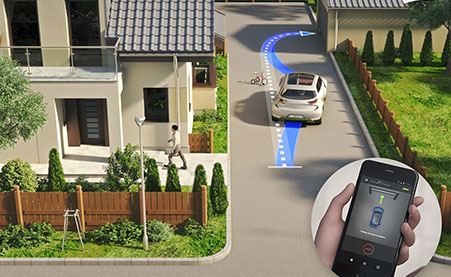
Our choices in terms of technology, governance, and environmental and social management illustrate our commitment to tackling sustainable development challenges in a holistic way. Our priority is to involve our entire ecosystem – plants, employees, suppliers and partners – in the process of decarbonizing our activities.
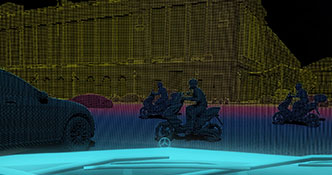
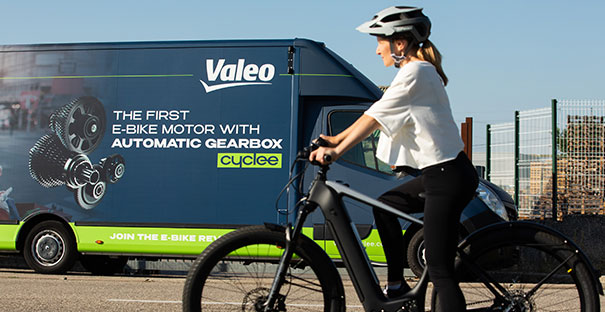
Since 2009, Valeo has placed reducing CO2 emissions at the heart of its growth strategy. This initiative forms part of a pathway dating back more than 20 years, on which the Group has continuously expanded its sustainable development work, positioning it today as a leading player in the industry.

"By setting up the Sustainable Development Department in 2010, Valeo illustrated its commitment to tackling these issues in a holistic way. The Group has since implemented a sustainable development policy and rolled out tools to measure its performance. Our sustainable development work steers our trajectory according to changing environmental and social requirements. We will continue to strengthen our work in this area each year, across the entire value chain and globally, region by region." Jean-Luc Di Paola Galloni Vice President, Sustainable Development And External Affairs
Valeo publishes its first environmental report

Valeo signs the United Nations Global Compact

Jacques Aschenbroich, then Valeo's Chief Executive Officer, makes CO2 emissions reduction a strategic focus and sets up the Sustainable Development Department

Valeo publishes its first sustainable development report

Valeo joins the “DJSI World” Dow Jones Sustainability Index in recognition of its sustainable development strategy and performance and its transparency in this area

Valeo is rated AAA by ESG rating agency MSCI and ranks first among auto suppliers

Valeo unveils its "CAP 50" plan, under which it commits to contributing to carbon neutrality by 2050

Valeo is one of the first tier-one automotive suppliers to publish a climate report. Also this year, the Group takes part in COP27

Valeo launches the first Circular Electronics Lab in Nevers, France
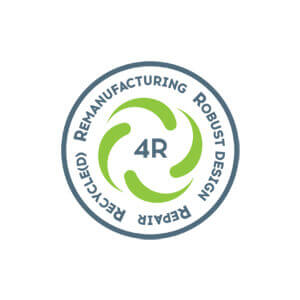
Valeo launches Canopy, its first product "eco-designed" to reduce CO2 emissions

Valeo takes part in COP28
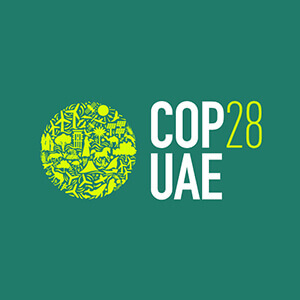
Valeo works day in, day out to develop innovative solutions for more sustainable mobility. Some 80% of a product’s environmental impact is determined in the design phase, which is why Valeo factors in this consideration from the earliest stages of its projects. Its approach is built on two pillars:
Decarbonizing mobility, by implementing the CAP 50 strategic plan, developing innovative technologies aimed at reducing CO2 emissions and improving operational eco-efficiency.
Preserving natural resources through the circular economy and sustainable water and waste management.
In what can be considered both a reiteration and an acceleration of the strategic positioning set out over a decade ago, Valeo aims to contribute to carbon neutrality by 2050, while continuing to expand its range of electrification technologies. Based on the CAP 50 plan unveiled in 2021, this ambitious strategy is coupled with a particularly challenging intermediate target for 2030.
By 2030, Valeo will reduce greenhouse gas (GHG) emissions from operating activities (Scopes 1 and 2 of the Greenhouse Gas Protocol) by 75% and upstream and downstream (Scope 3) emissions by 15%, in absolute terms, compared with its 2019 emissions. Its technologies will enable third parties to directly avoid 13.6 Mt CO2eq. of GHG emissions, equivalent to 27% of the Group's emissions (2019 baseline).
The scale of this challenge matches that faced by the road transportation sector as a whole, which alone is responsible for 18% of global carbon emissions. In response to the climate emergency, we need to go much further, and we need to act now, by reducing the Group's carbon footprint both at its sites and across its entire value chain.
MoreIn addition to reducing the carbon footprint of its own operations, Valeo works to reduce greenhouse gas (GHG) emissions at every stage of its products' lifecycle, from extraction and processing of materials by its suppliers to the end-user of its technologies on board vehicles, as well as end-of-life processing. Valeo sets its objectives based on the GHG Protocol framework.
By 2030, Valeo is committed to reducing its GHG emissions from operating activities (Scopes 1 and 2 of the GHG Protocol) by 75% and upstream and downstream emissions (Scope 3) by 15%, in absolute terms, compared with its 2019 emissions. The Group has also pledged to ensure that its technologies enable third parties to directly avoid 13.6 MtCO2eq. of emissions (compared to 2019), equivalent to 27% of total 2019 emissions.
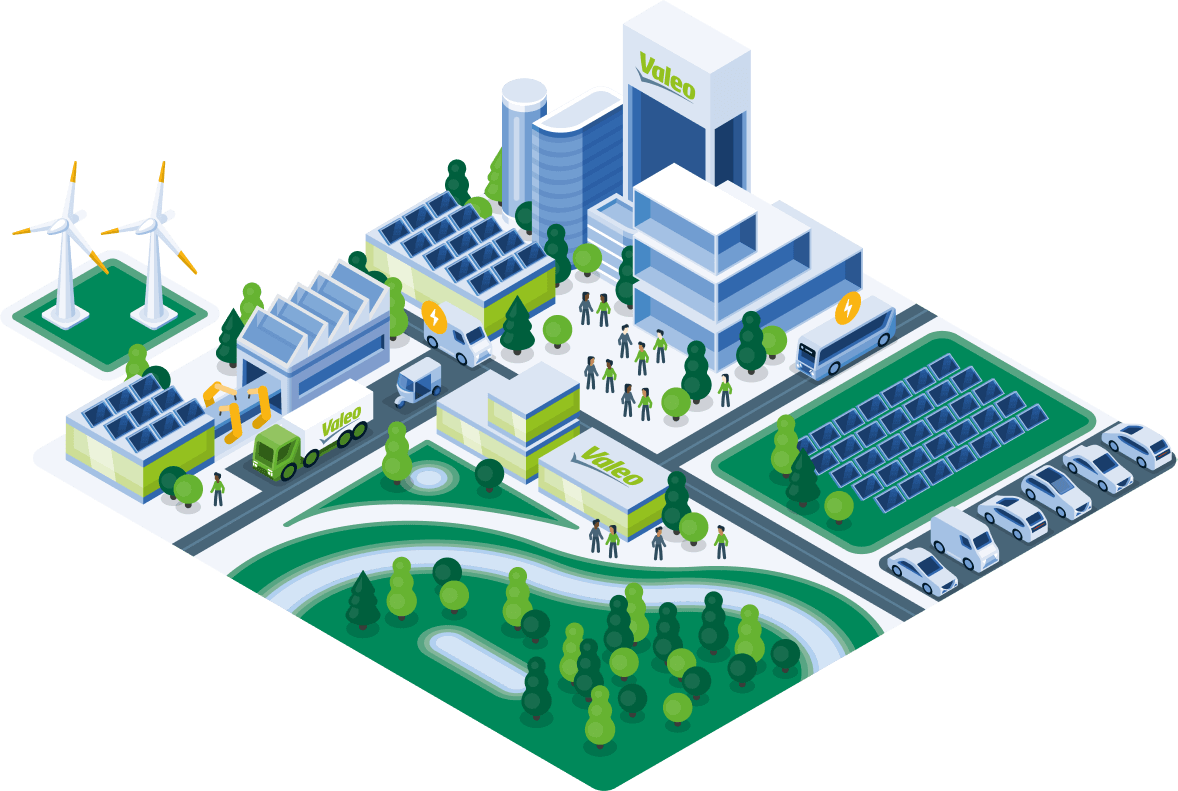
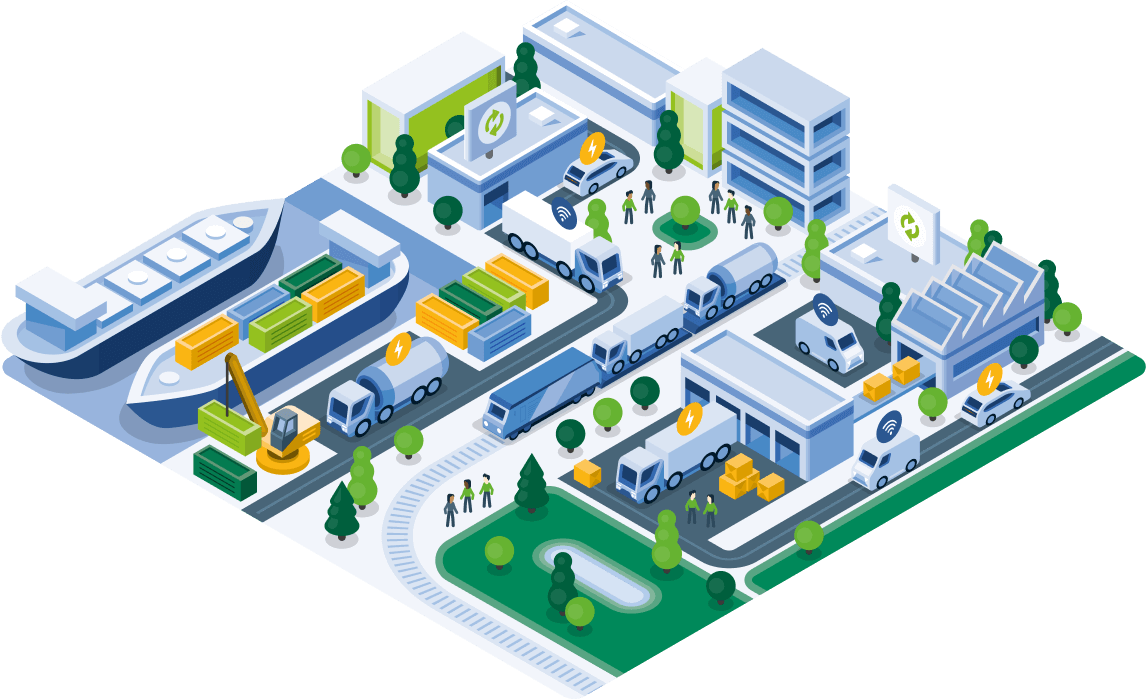
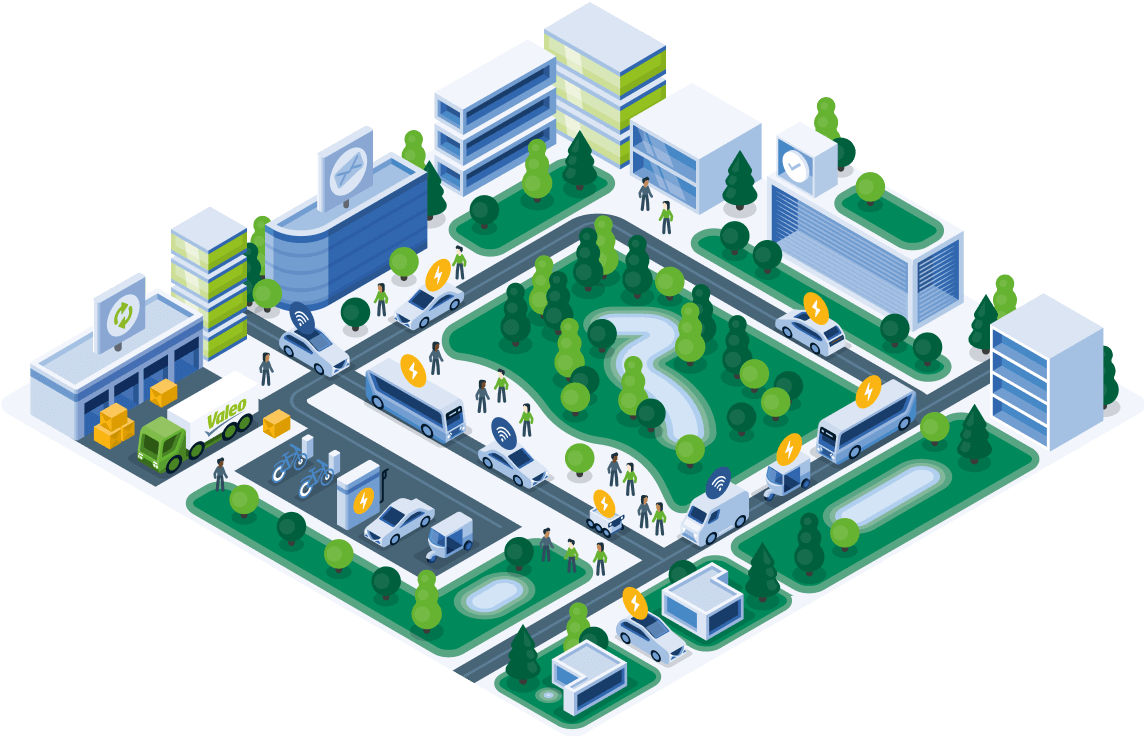
GHG emissions generated before the production phase, including extraction and transformation of raw materials, component manufacturing processes at suppliers, and transport and logistics to get to Valeo sites.
Direct and indirect GHG emissions related to production, including manufacturing, lighting and heating, and energy consumption processes. These relate to all Group sites: factories, R&D centers, distribution platforms and headquarters.
GHG emissions related to the use of Valeo technologies in vehicles until the end of their life
Avoided emissions refer the difference between GHG emissions in a baseline scenario and those in a scenario using a decarbonization solution. This means considering the impact of Valeo technologies on the vehicle as a whole, not just the component. 2030 Objectives: 13.6 million metric tons of GHG emissions avoided by third parties, directly attributable to Valeo technologies, especially those enabling electrification. This is equivalent to 27% of Valeo's 2019 emissions.
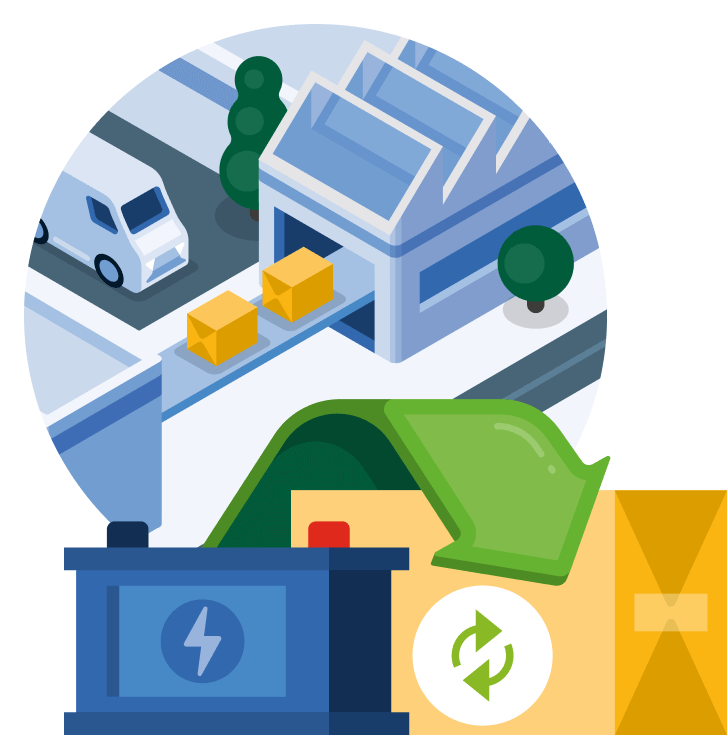
Involving our suppliers in our decarbonization
goals and preserving resources
Suppliers are selected based on their decarbonization goals, aligned with Valeo's, and supported throughout their trajectory
Use of innovative or recycled materials

GHG emissions generated before the production phase, including extraction and transformation of raw materials, component manufacturing processes at suppliers, and transport and logistics to get to Valeo sites.
2030 Objective:-15% emissions*
suppliers
components enter Valeo factories every day
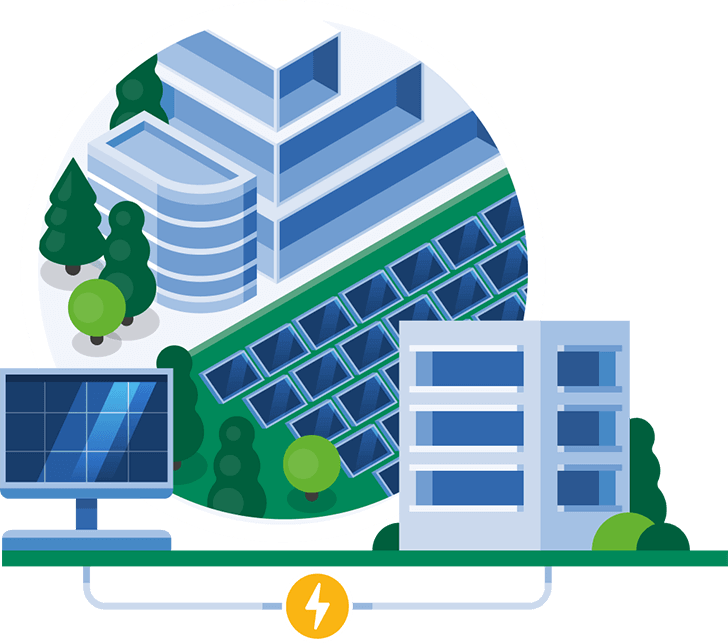
Reducing direct and indirect
emissions from the manufacturing of Valeo
products and systems
Transforming our 100 highest emitting sites into high-energy-efficiency sites by 2030
Developing the use of low-carbon or renewable energies: solar panels, wind energy
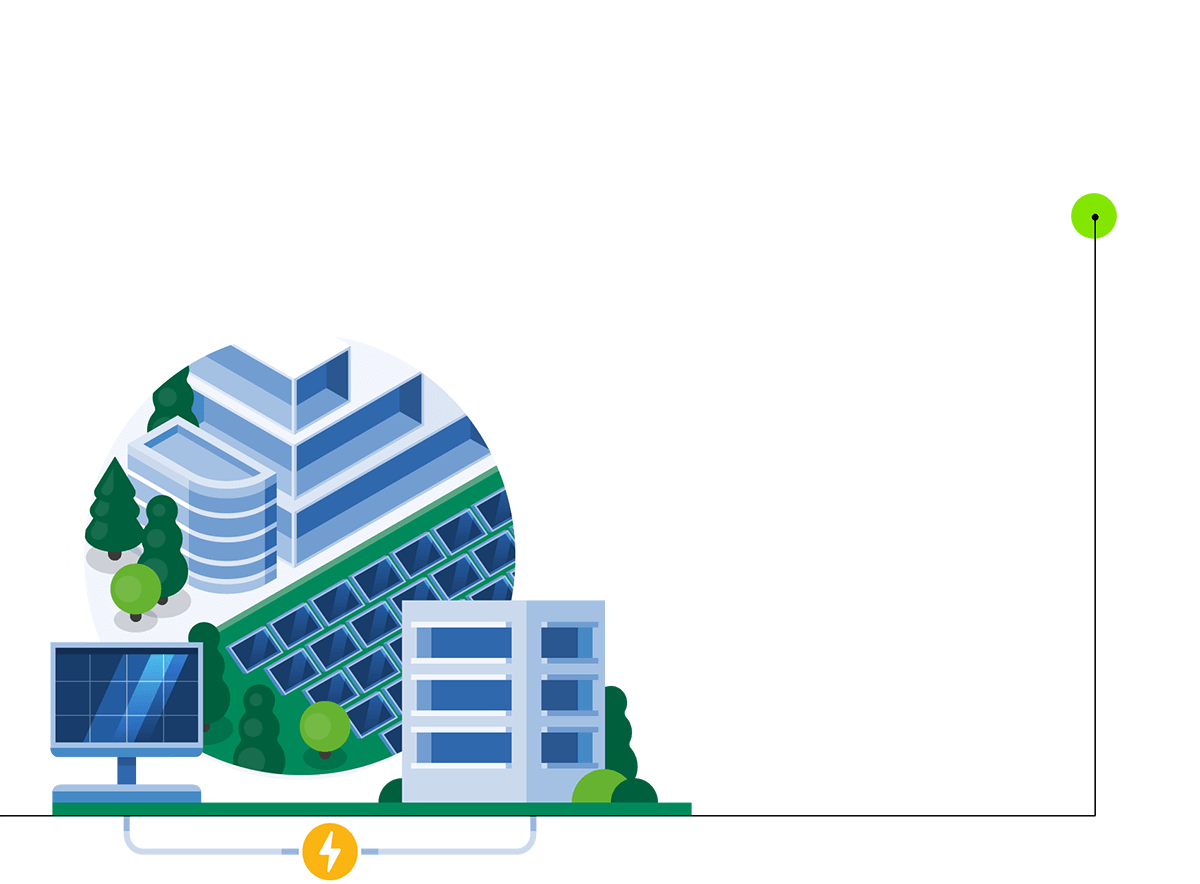
Direct and indirect GHG emissions related to production, including manufacturing, lighting and heating, and energy consumption processes. These relate to all Group sites: factories, R&D centers, distribution platforms and headquarters.
2030 Objective:-75% emissions*
million investment over 10 years for more than 200 sites
of energy consumption will be low-carbon by 2030
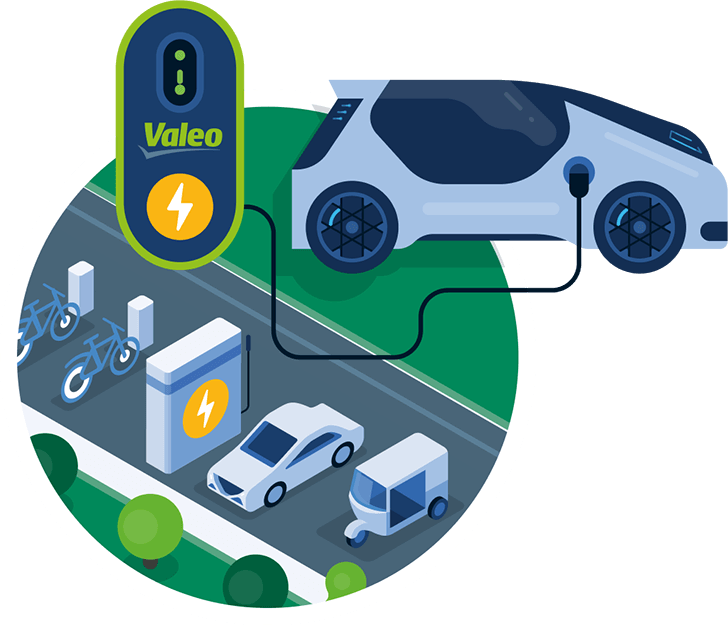
Optimizing the use phase of Valeo products
throughout the lifespan of a vehicle
and beyond
Accelerating the development of electrification technologies to contribute to the decarbonization of mobility
Developing eco-designed products: recycled materials, weight reduction and recyclable packaging
Increasing the energy efficiency of our products
Favoring less carbon-intensive modes of transportation
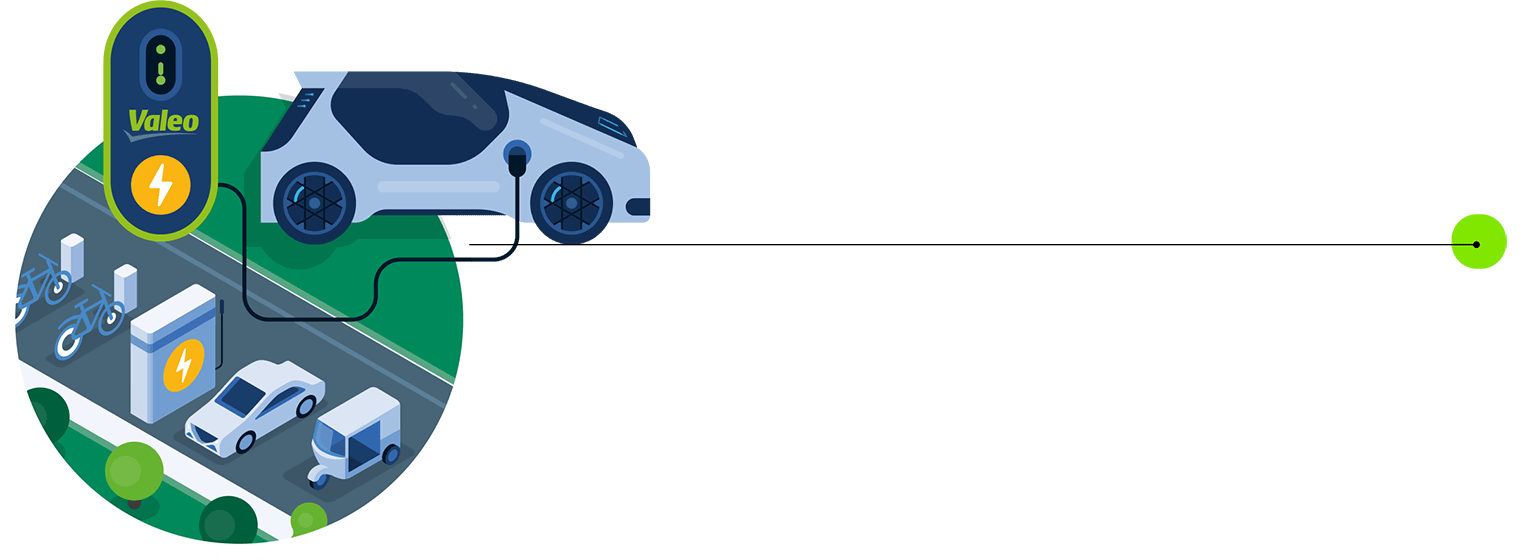
GHG emissions related to the use of Valeo technologies in vehicles until the end of their life
2030 Objective:-15% emissions*
(integrating the electrification benefits of Valeo technologies)
1 in 3 new cars worldwide is equipped with Valeo electrification technology to reduce CO2 emissions
products leave Valeo factories every day
Avoided emissions refer the difference between GHG emissions in a baseline scenario and those in a scenario using a decarbonization solution. This means considering the impact of Valeo technologies on the vehicle as a whole, not just the component.
2030 Objectives:13.6 million metric tons
of GHG emissions avoided by third parties, directly attributable to Valeo technologies, especially those enabling electrification. This is equivalent to 27% of Valeo's 2019 emissions.
Valeo designs robust and easily repairable products to maximize their lifespan. Their design also minimizes operations needed for recycling or reuse, with a focus on products' second life.
-50 MtCO2eq. emissions
CAP 50 aims to reduce Valeo's greenhouse gas emissions from 50 Mt (2019 baseline) to zero by 2050.
Targets for 2050
Valeo has set itself two targets for 2050: at the global level, contribute to carbon neutrality across all of its operating activities and its entire supply chain and, in Europe, also in the product use phase.
Technological solutions driving the automotive industry's transformation
The mobility of the future will be electric and affordable. Thanks to the investments made over the past decade, our product portfolio is ready for this challenge. We cover all segments and uses, from affordable hybrid solutions to the most powerful all-electric powertrain systems. Our businesses are therefore driving the automotive industry's transformation.
Each of our innovations is underpinned by one key aim – reducing CO2 emissions and energy consumption in the mobility sector. A global leader in its markets, Valeo offers a comprehensive range of low- and high-voltage electrification technology for electric vehicles, as well as thermal management systems, which are essential for developing comfortable, high-performance electric vehicles with an attractive travel range. As well as cars, Valeo's technologies can also be used in the electrification of all forms of mobility, including two- and three-wheelers, light urban quadricycles, delivery droids and autonomous shuttles.
The Design for Environment approach also aims to minimize the use of resources, and to factor in the circular economy through prerequisites such as ensuring that products can be dismantled.
Valeo applies its "Design for Environment" eco-design approach to all of its product ranges. The Group is committed to reducing CO2 emissions throughout its products’ lifecycle, right from the initial product design phase.
Upstream, this means increasing the proportion of recycled materials used, as well as developing innovative materials. Another method is to make its products lighter, which reduces both the carbon footprint of the materials used and the emissions generated during vehicle use.
Decarbonization concerns the entire value chain. In order to reduce upstream Scope 3 emissions, Valeo sets objectives for all its suppliers in line with its own commitments. It also helps them to improve their sustainable development practices. To find out more, visit our Value Chain Commitments page.
Valeo's innovations help to reduce the Group's carbon footprint, but the benefits can be felt far beyond the value chain. By 2030, based on the trend toward vehicle electrification, Valeo is committed to ensuring that its technologies will directly help to avoid 13.6 million MtCO2eq. emissions per year (compared with the 2019 baseline).
new cars worldwide is fitted with a Valeo electric solution that helps to reduce CO2 emissions.
of our sales are derived from technology contributing to the reduction of CO2 emissions
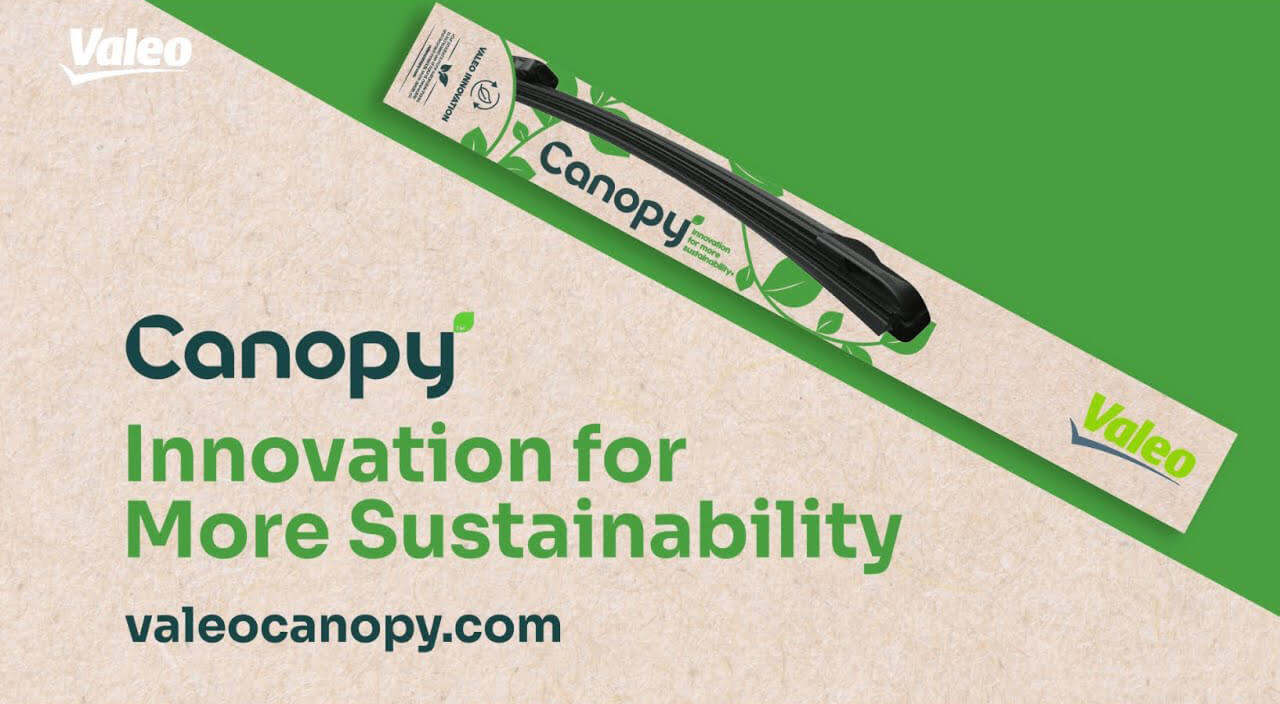
Prioritizing eco-efficiency at Valeo's sites
We are constantly striving to reduce the consumption of energy and resources during the production phase. To do so, we systematically analyze our processes and roll out initiatives across all our sites to enhance building energy performance (by installing LED lighting, insulation and heat recovery systems, for example) and improve production processes.
Thanks to these gradual upgrades, the Group's 100 most GHG-intensive facilities will be highly energy efficient by 2030.
This approach covers all of our sites. Here are some examples:
Scope 1 and 2: Low carbon energy self production
Solar Panel
3 444 tCO2eq. per year
Scope 1 and 2: Low carbon energy self production
Solar Panel
2 920 tCO2eq. per year
Scope 1 and 2: Low carbon energy self production
Solar Panel
1 492 tCO2eq. per year
Scope 1: Energy efficiency and gas elimination
HTT RX Gas Process elimination
377 tCO2eq. per year
Scope 1: Energy efficiency and gas elimination
Compressed air/leakages fixed
371 tCO2eq. per year
Scope 1: Energy efficiency and gas elimination
Controlled air flow on injection machine
246 tCO2eq. per year
Scope 1: Energy efficiency and gas elimination
Calories recovery compressor
38 tCO2eq. per year
Scope 1 and 2: Low Carbon Energy
16 Heat pumps installed to cover 4 Valeo buildings
3 956 tCO2eq. per year
Scope 1 and 2: Low Carbon Energy
Nitrogen Generator-Green Energy
176 tCO2eq. per year
Scope 1 and 2: Low Carbon Energy
Paint process optimization
230 tCO2eq. per year
Scope 1 and 2: Low Carbon Energy
Replacing oil heating with biomass heating
364 tCO2eq. per year
Scope 1 and 2: Low carbon energy self production
Solar Panel
884 tCO2eq. per year
Scope 1 and 2: Low carbon energy self production
Solar Panel
207 tCO2eq. per year
Scope 1 and 2: Low carbon energy self production
Solar Panel
438 tCO2eq. per year
Scope 1: Energy efficiency and gas elimination
Inventory Air compressor installation
224 tCO2eq. per year
Scope 1: Energy efficiency and gas elimination
Installation of 6 Elspec Units
1 750 tCO2eq. per year

While electrification is a key response when it comes to reducing CO2 emissions in the automotive industry, the circular economy, which encourages reuse, aims to optimize the use of raw materials and preserve the planet's resources.
One demonstration of Valeo's commitment to accelerating the circular economy is its 4R plan, which is designed to maintain the value of assembled finished products for as long as possible and preserve natural resources as effectively as possible.
More
Identify wear parts to anticipate and facilitate repair and remanufacturing requirements
Identify the most robust part of each product so that it can be reused at the end of the product's life
Refurbish reusable products, giving them a warranty of at least two years
Thanks to more than 40 years of expertise, Valeo has the capacity to remanufacture more than one million products per year, and aims to double this figure by the end of the decade
Repair or replace damaged parts to restore the product to its original condition
An entire lab dedicated to electronic component repairs
Valeo is a member of the Circular Plastics Alliance aimed at boosting the market for recycled plastics
Set up a recycling circuit for rare earths (Magnolia project)
Christophe Périllat - IAA MOBILITY 2023
Decarbonization and circular economy
in the mobility industry:
a collective responsibility to accelerate further
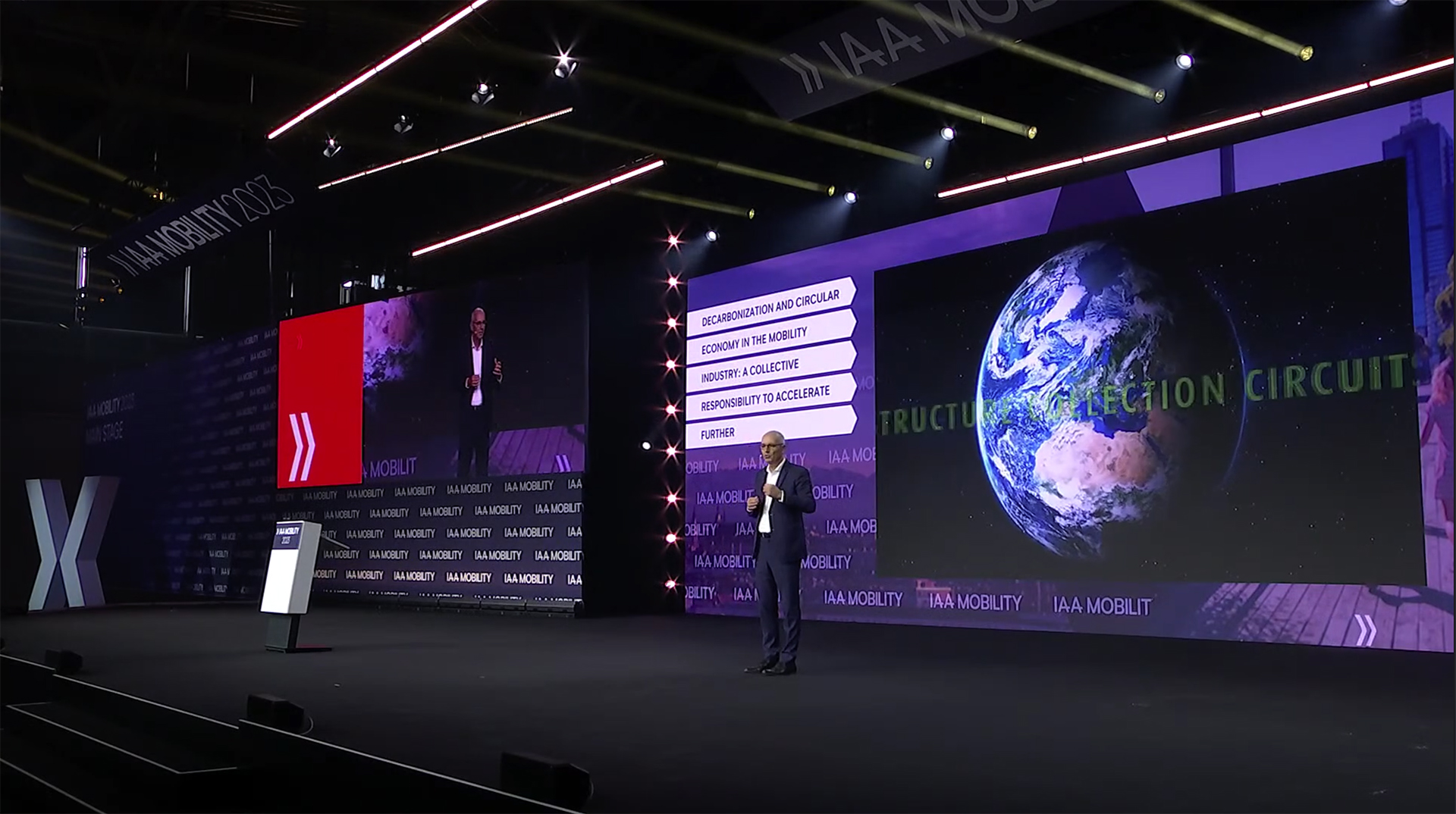
Circularity
from the outset
The Design for Environment approach also aims to minimize the use of resources, and to factor in the circular economy through prerequisites such as ensuring that products can be dismantled.
Valeo believes that each part or component must be designed to last as long as possible in order to optimize its life span. This means that products must be able to be easily dismantled for repair or recycling.
In 2022, Valeo launched the co-development of a rare-earth-free motor, in collaboration with Renault. As well as reducing its carbon footprint by 30%, this innovation is a major step forward in preserving critical elements, such as neodymium and dysprosium, traditionally used in permanent-magnet motors for electric vehicles.
Valeo and Renault join forces to create an unprecedented rare-earth-free electric motor reaching 200 kW
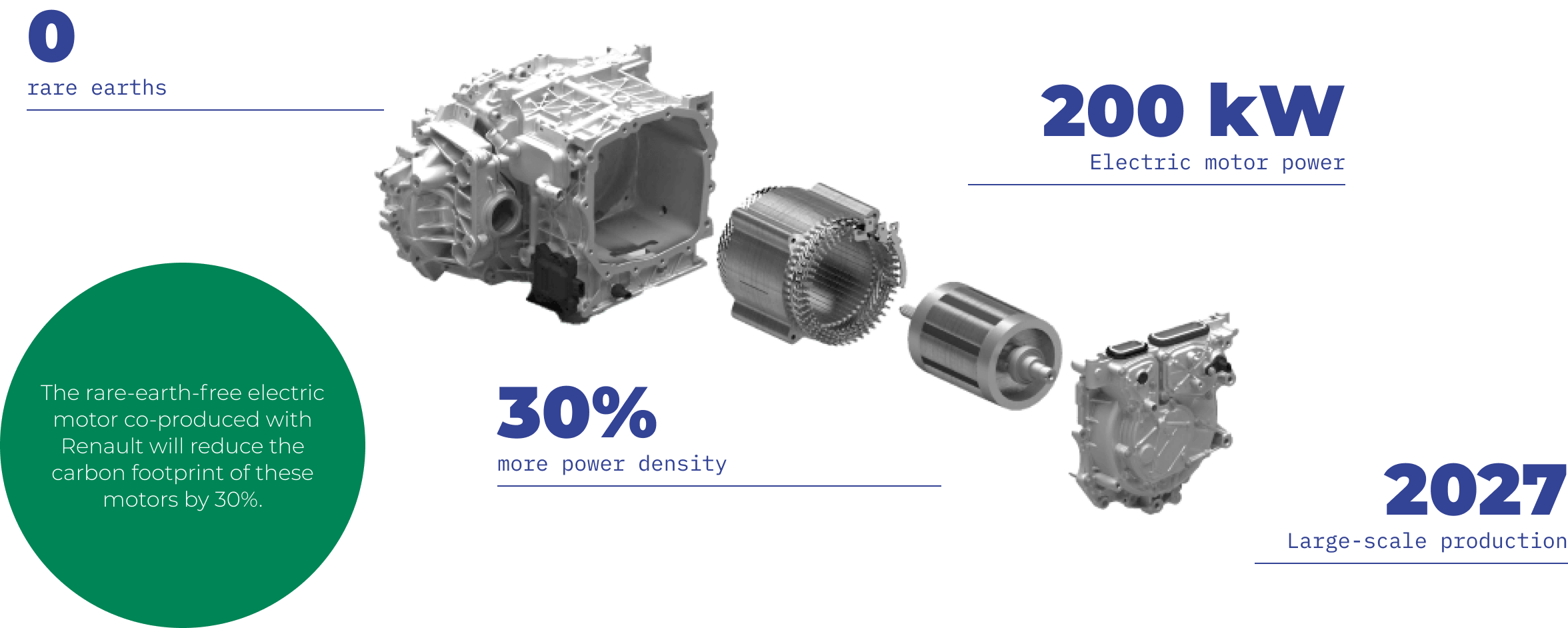

Most of our waste results from the use of metals or the consumption of packaging. 90% of it is non-hazardous, which means it is easy to recycle.

“We design technology that defines a better future and that’s more than just automotive. We develop mobility that’s cleaner and safer, and includes cars, bikes, three-wheelers and so much more.” Geoffrey Bouquot, Valeo CTO & SVP Strategy at @CES Unveiled in Paris #mobility https://t.co/JZlc1iLniW
Valeo believes that employee progress goes hand in hand with financial performance. It believes that the trust of its employees, who are present in 29 countries and represent more than 140 nationalities, is an essential asset. That's why it has made firm commitments in terms of diversity, equity and inclusion, health and safety, quality of life at work, and employee engagement.
In addition to these pledges to its employees, Valeo is committed to its value chain, local ecosystems and populations in all the countries where the Group is present. For example, it supports suppliers in their sustainable development practices, develops partnerships with schools and universities, supports local research and participates in charity and educational programs.
MoreThanks to its transparent initiatives and rigorous reporting, Valeo has been positioned among the best-rated automotive suppliers by the main ESG rating agencies for a number of years.
Since its creation 13 years ago, Valeo’s Sustainable Development Department has worked tirelessly to continually improve the Group’s performance and transparency on environmental, human resources and social issues, making Valeo one of the leading automotive suppliers in terms of non-financial performance.
In 2022, Valeo was awarded an "A" score by CDP Climate (Carbon Disclosure Project), in recognition of the Group's performance on climate change.
MoreIn 2022, Valeo was ranked no.1 among auto component suppliers by MSCI ESG with an AAA "leader" rating
(excl. Tyre companies)
 cac40
cac40  global esg
global esg  esg
esg 
In addition to these ratings, Valeo's shares are included in most ESG stock market indices.







This first climate report presents the commitment, trajectory, governance and actions that Valeo will deploy to accelerate its path to carbon neutrality.
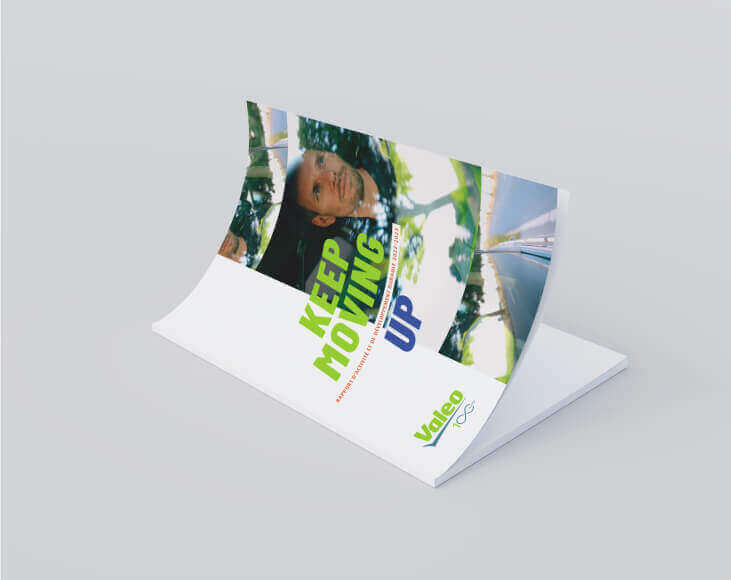
For a century, Valeo has been putting its capacity for innovation and industrial excellence at the service of your mobility, with the constant ambition of making it ever simpler, safer and more virtuous.
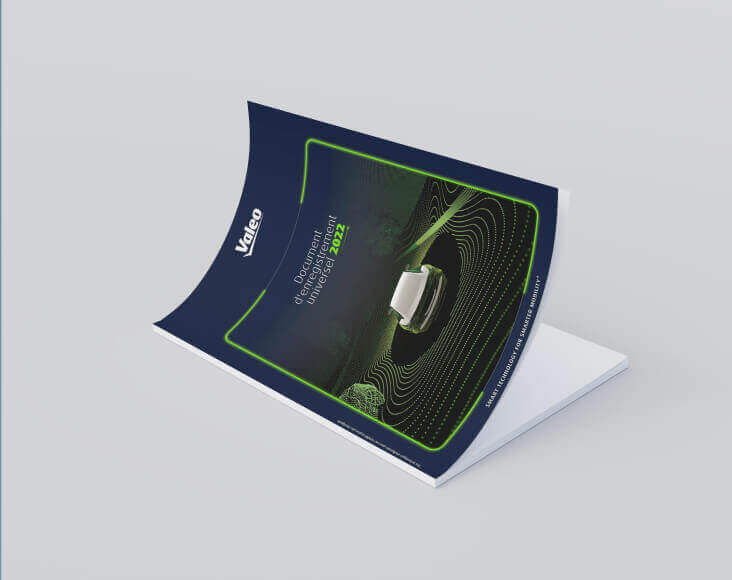
Eight year running, valeo has elected to use integrated reporting to present its purpose and business model.
#v4l30_c0m#
When you visit any website, it may store or retrieve information on your browser, mostly in the form of cookies. This information might be about you, your preferences or your device and is mostly used to make the site work as you expect it to. The information does not usually directly identify you, but it can give you a more personalized web experience. Because we respect your right to privacy, you can choose not to allow some types of cookies. Click on the different category headings to find out more and change our default settings. However, blocking some types of cookies may impact your experience of the site and the services we are able to offer.
These cookies are necessary for the website to function and cannot be switched off in our systems. They are usually only set in response to actions made by you which amount to a request for services, such as setting your privacy preferences, logging in or filling in forms. You can set your browser to block or alert you about these cookies, but some parts of the site will not then work. These cookies do not store any personally identifiable information.
These cookies allow us to measure visits and traffic sources so we can improve the performance of our site. They help us to know which pages are the most and least popular and see how visitors move around the site. All information these cookies collect is aggregated and your personal data will not be identified by these cookies as they collect anonymous information. Some other sites may call these “performance or analytics cookies”. If you do not allow these cookies we will not know when you have visited our site, and will not be able to monitor its performance.
These cookies enable us to personalise your experience on our site with things like relevant content (e.g. videos) or products you might be interested in (e.g. based on what you previously viewed). These cookies may be set by us or by third party providers who add services/features to our sites (e.g. videos). If you would like the site to be more tailored to you, please turn these cookies on.
